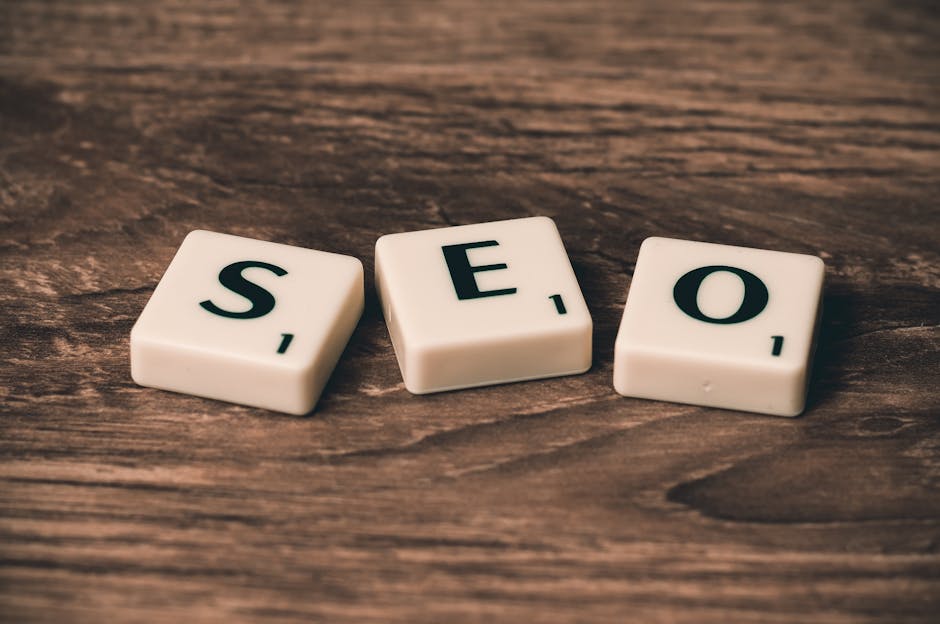Right then, let’s have a natter about Google Shopping, what passes for SEO on that particular beast. You hear all sorts of bollocks these days, everyone’s a guru, aren’t they? Been in this game since before Google was even a verb, back when folk were still arguing about what a “website” actually was. And trust me, the more things change, the more they just get a fancy new name for the same old graft.
This “Google Shopping SEO” thing, it’s a funny old duck. Some folk reckon it’s all about tricking the system, don’t they? Like you can just whisper sweet nothings into Google’s ear and it’ll suddenly show your dodgy widget before everyone else’s. Absolute cobblers, mostly. It’s not about magic spells, never was. It’s about being smart, really knowing your product, and more importantly, knowing the customer. And frankly, knowing Google’s a greedy bugger.
I remember this one time, fella came to me, bright-eyed and bushy-tailed, wanted to “dominate” Google Shopping. Had a load of tat he’d bought cheap from some wholesaler. His product descriptions were thinner than a supermodel’s patience, full of keywords shoved in like sausages in a skin. Tried to tell him, “Mate, it don’t work like that.” He just blinked at me. Some people, you just can’t teach ’em.
What really matters on Google Shopping, it’s not your bidding strategy primarily, though that’s a part of it, aye. It’s how well you tell Google what you’re selling. Sounds simple, doesn’t it? But people proper muck it up. Product titles, descriptions, even the images. They’re all shouting at Google, telling it, “Look here, look what I’ve got!” And Google, bless its cotton socks, tries to make sense of the racket.
Product Titles: More Than Just a Name
Your product title, see, that’s your shop window. You wouldn’t put a blurred photo in your actual shop window and expect folks to come in, would you? So why do it online? I’ve seen titles that are just the brand name, then some numbers. Useless. Or titles that are paragraphs long, trying to cram in every keyword under the sun. Google don’t like that. People don’t like that. It’s a fine line, a real balancing act. You gotta get those important bits up front. Brand, product type, key attribute, maybe size or colour. You’re talking about Google Shopping SEO, this is where it begins, right at the product level.
I had a client once, selling garden furniture. Their titles were like, “Patio Set – Model 345.” I told them, “No one’s searching for ‘Model 345’ unless they already know they want your specific, boring model. They’re searching for ‘rattan garden sofa set with fire pit’ or ‘small bistro table for balcony’.” We changed ’em, and suddenly, boom, traffic. Not rocket science, is it? Just thinking like a normal human.
The Devil in the Data Feed Details
Right, so you’ve got your product titles sorted, looking good. But that’s just the tip of the iceberg, isn’t it? The real guts of Google Shopping SEO, it’s in the data feed. That XML file, or CSV, or whatever format you’re using. That’s where you tell Google everything it needs to know. And when I say everything, I mean everything. From gender to age group to material to pattern. If Google has a field for it, fill it. Always.
I’ve seen so many outfits, they just punt out the bare minimum, thinking it’s grand. They’ve got their EANs in, their prices, and their availability. Good for you. But you’re leaving so much on the table, son. Imagine you’re selling shoes. You don’t just say “shoes.” You say “men’s leather lace-up brogues, brown, size 10, Goodyear welted.” That’s telling Google, “Hey, this here is exactly what someone’s searching for!” And Google loves specifics, makes its job easier, don’t it?
It gets flung out there, the product data, for the whole world to gawp at. You’d think people would take more care. Sometimes I wonder if half of them even look at their own listings.
Working with the Big Platforms: Shopify, BigCommerce, and Beyond
You’d be surprised how many folks think because they’re on a big platform, Google Shopping SEO just happens automatically. “Oh, Shopify does it for us!” they chirp. Bless their innocent hearts. Shopify makes it easier, sure, but it doesn’t do the thinking for you. You still gotta go in there and make sure your product data is clean, complete, and correct. Same goes for BigCommerce, or Magento, or whatever flavour of e-commerce system you’re running. They’re just the pipes. You still gotta make sure the water’s clean before you send it down.
These platforms are great for getting a shop up fast, but they’re not mind-readers. You want to rank well on Google Shopping, you still need to put in the leg work. Export your feed, review it. Look for missing attributes. Look for dodgy categories. It’s like checking your tires before a long drive. Simple stuff, but if you don’t do it, you could end up in a ditch.
Images: The Silent Salespeople
And the images, oh my word, the images. People slap up photos taken with a potato and wonder why no one’s clicking. Your product image is paramount. Clean, high-resolution, multiple angles if possible. White background, usually, unless you’re doing some fancy lifestyle shots. But even then, make sure you’ve got a standard product shot too. Google’s pretty strict on images, don’t forget. They got guidelines for a reason. You can’t just be flinging up whatever. That’s a surefire way to get your listings rejected.
Some don’t even bother to use all the image fields, you know? You can upload more than one. Use ’em! Give the customer every reason to click on your thing. Think about how you shop online. What makes you click? Usually a cracking photo, that’s what.
Agency Insight: Smartly.io and the Automation Angle
Now, some of the bigger fish in the pond, they’re using tools like Smartly.io. Proper sophisticated stuff. These platforms, they ain’t cheap, mind. But if you’ve got thousands of products, maybe even millions, manual feed optimisation becomes a nightmare. Smartly.io and similar services, they automate a heap of it. They can pull in data from all over the place, enrich your feeds, even manage your bids based on complex rules. It’s not just for Google Shopping, but certainly a huge part of what they do.
I’ve seen some impressive results from businesses that have really invested in these kinds of automation tools. They allow you to scale your efforts, make changes across your entire catalogue in minutes, not weeks. But here’s the kicker: the automation is only as good as the data you feed it. Garbage in, garbage out, as my old mum used to say. So while Smartly.io can be a godsend for big brands, you still need a human brain overseeing the whole caboodle, ensuring the strategy’s sound and the data’s clean. No matter how smart the tech, it still needs direction. What’s the point of automating a mess, eh?
What’s the best way to get products showing for niche searches? You’ve got to be descriptive, right down to the specific attributes. No one’s just looking for a “chair.” They’re looking for a “mid-century modern velvet accent chair in emerald green.” Your feed needs to reflect that.
Consulting Powerhouses: Tinuiti and Merkle
Then you’ve got the agencies, don’t you? The likes of Tinuiti or Merkle. These are the big hitters. They’re managing vast sums of advertising spend for their clients, and Google Shopping is a massive piece of that pie. They’ve got dedicated teams, analysts, data scientists. They live and breathe this stuff. When you’re talking about serious Google Shopping SEO, especially at scale, these firms are deep in the trenches. They see the trends, they understand the algorithms changes often before the rest of us even catch wind.
Now, working with a big agency ain’t for everyone. They cost a pretty penny, sure. But if you’re a decent-sized business and you’re serious about growth, you might need that kind of horsepower. They’ll dig through your feed, spot opportunities you never even considered, tweak things you didn’t know existed. They’re not just about bidding, they’re about content, about category structure, about how your products sit within Google’s universe. They’re the ones who can truly take your Google Shopping performance to the next level because they’re doing it day in, day out, for hundreds of clients.
It really is an absolute minefield, this whole digital marketing caper. You’ve got to have some backbone to stand your ground and tell people what they need to hear, not what they want to hear. Some folks just want to throw money at it and hope for the best. Doesn’t work like that. Never has.
Feed Optimisation Beyond the Obvious
Beyond the titles and descriptions, there’s always more. Custom labels, for instance. A lot of people just ignore ’em. Foolish, I reckon. You can use those custom labels for all sorts of clever things. Cost of goods, profit margins, seasonality, stock levels. All these bits and bobs, they help you segment your campaigns better. They let you tell Google, “Hey, this product’s got a high margin, push it harder.” Or “This one’s nearly out of stock, ease off.” It’s about giving yourself control, making Google work for you, rather than you just throwing money at it blind.
What’s the fuss about negative keywords? Listen, you don’t want your fancy, high-end bespoke furniture showing up when someone’s searching for “cheap ikea desk.” That’s a waste of money, a wasted click, and a bad experience for the searcher. Negative keywords are your bouncer, keeping the riff-raff out. You gotta be on top of ’em, always adding more. It’s an ongoing process, not a one-and-done job.
It’s not just the words you use, you see, it’s the words you don’t use.
The Ever-Shifting Sands of Algorithm Updates
And don’t even get me started on the algorithm changes. Google’s always fiddling, always tweaking, aren’t they? One day something’s working a treat, the next, it’s gone belly up. You gotta be agile, mate. You can’t just set it and forget it. That’s a recipe for disaster. This Google Shopping SEO lark, it’s not a sprint, it’s a marathon, and the finish line keeps moving. You gotta keep an eye on your performance data, watch for dips, watch for spikes. And don’t panic if something changes. Just figure out what Google’s trying to do and adapt.
I remember when they changed how they valued mobile traffic. Overnight, some of my clients saw their costs per click go through the roof ’cause they hadn’t adjusted their bids. It’s like, come on, people, keep up! The internet doesn’t stand still, so why should your strategy?
Thinking Beyond the Click: Conversion Matters More Than Traffic
Look, getting clicks is one thing. Anyone can get clicks if they bid high enough, can’t they? But clicks don’t pay the bills. Conversions do. So when you’re thinking about Google Shopping SEO, you’re not just thinking about getting seen. You’re thinking about getting seen by the right people, the ones who are actually gonna buy your stuff. That means your product listings gotta be attractive, sure, but your landing page, your actual product page, that’s gotta be spot on too.
If your product page is slow to load, if it’s confusing, if the price isn’t clear, or if the shipping costs are a shocker, then all that effort on your feed and your bids, it’s wasted, isn’t it? It’s like inviting someone to a fancy dinner and then serving them burnt toast. Everything needs to align. From the initial search, through the click on your Google Shopping listing, right through to the checkout. It’s a journey. You gotta hold their hand the whole way.
How do I check if my product feed is good enough? Go to Google Merchant Center, see the diagnostics tab. It’ll tell you all your missing attributes, your errors. Don’t ignore it. It’s Google practically telling you what to fix. Also, look at what your competitors are doing. Are their listings richer, more descriptive? Probably. Then go and do better.
What if my products are unique, and there aren’t many search terms for them? Aye, that’s a pickle. You still need to describe them with every relevant detail. Think about what your ideal customer would type in if they knew exactly what they wanted. Break down your unique product into its component parts, its benefits, its materials. Get creative with those product titles and descriptions. Use custom labels for characteristics that aren’t standard. Sometimes it’s about educating Google about your product, not just fitting into its existing boxes.
You’ve got to be brutal with yourself. Is this listing really going to make someone click? Is it going to make them buy? If the answer’s a bit wobbly, then you’ve got work to do. Don’t settle for “good enough.” Good enough is for chancers, and chancers don’t make a proper living in this game. They get chewed up and spat out. Happens all the time. Seen it with my own eyes.



